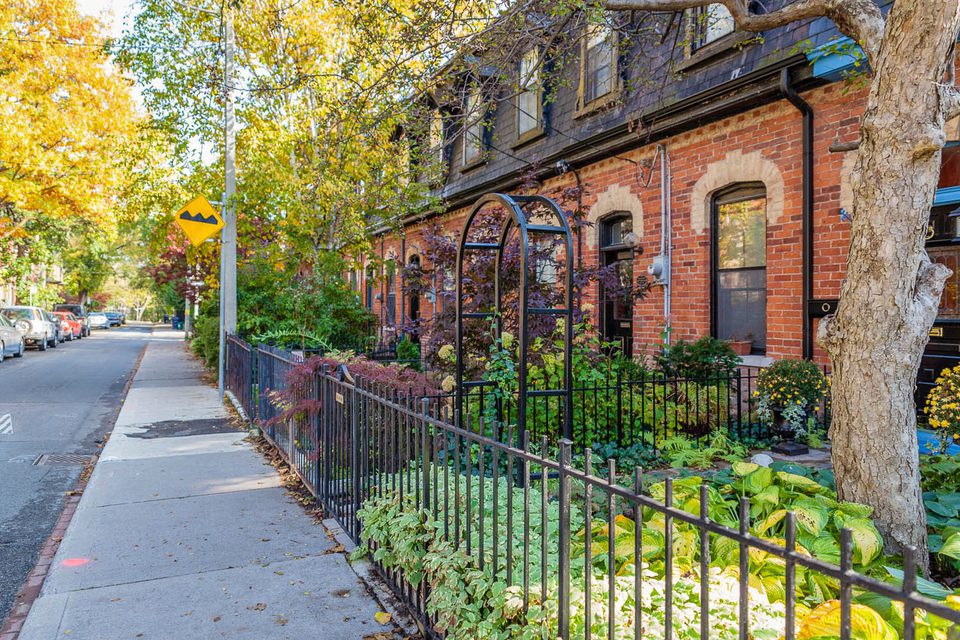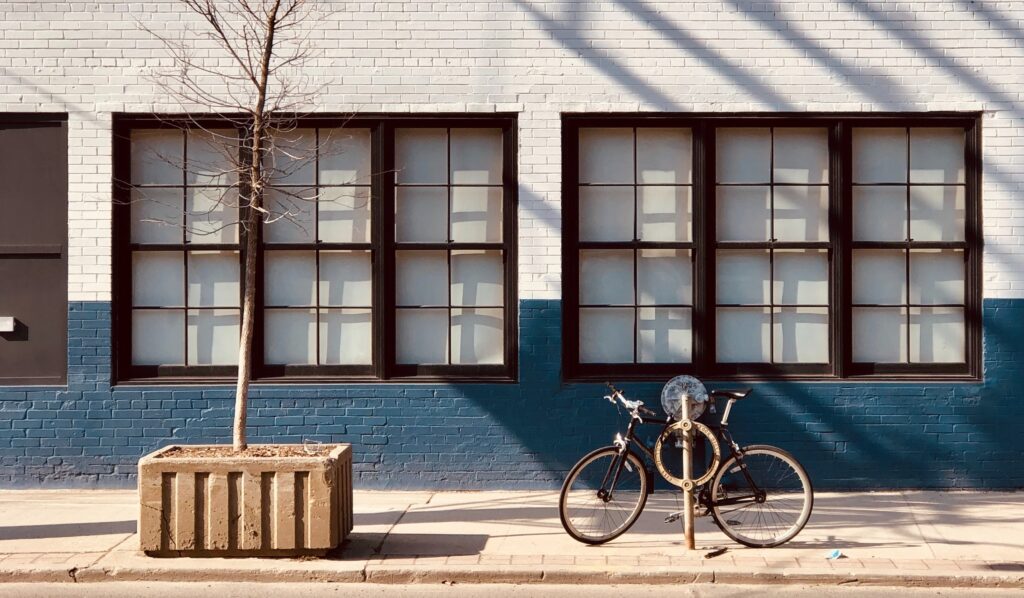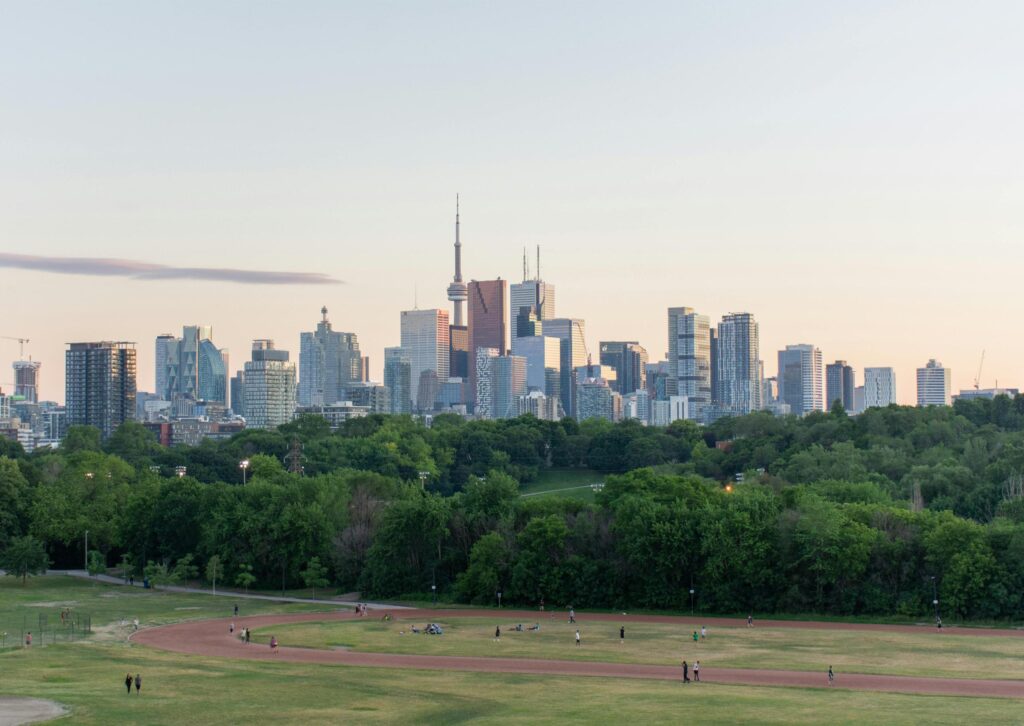Those who know Toronto can tell you that Cabbagetown is one of the city’s most historic and treasured neighbourhoods. Whether you live there or visit frequently, every minute spent in this storied Toronto neighbourhood is enjoyable.
However, being located in the comparably quieter and less lively east end of Toronto, not many newcomers to the city are fully aware of Cabbagetown and its understated allure. While you might argue that long-time Cabbagetown homeowners prefer it that way, the appeal of this character-filled neighbourhood is no secret.
Whether you’re a lifelong Toronto resident or are planning on relocating here soon, there are a few things to keep in mind when considering a home in Cabbagetown ahead of your next real estate purchase.
Where Is Cabbagetown?
Cabbagetown just about falls under what’s considered Toronto’s east end — though not by much.
Although the neighbourhood is east of Yonge Street (which more or less acts as the city’s divide between east and west) Cabbagetown doesn’t continue on further east of the Don River. This is one clue you’re officially in what’s considered the east end. In fact, the Don River acts somewhat as Cabbagetown’s eastern border, with the neighbourhood extending as far west as Sherbourne Street.
Starting to fall in love with this truly beautiful Toronto neighbourhood? You’ll enjoy some of our other blogs about Cabbagetown too:
A Haven for Green Space
Within Cabbagetown and in many of the surrounding neighbourhoods there are a lot of fantastic amenities. One of Cabbagetown’s most beloved and frequently visited local amenities is Riverdale Farm.
Found in Cabbagetown’s eastern end, this charming little farm is tucked away in the heart of this quiet residential neighbourhood and is home to an impressive array of animals considering its inconspicuous location.
One minute you can find yourself strolling down the heritage-driven sidestreets of quaint Cabbagetown, the next feeding ducks, petting sheep, and gazing at the elegant horses at Riverdale Farm.
In fact, essentially the entire northeastern area of Cabbagetown consists of large public parks and green spaces. The St. James Cemetery leads into the expansive Rosedale Ravine Lands, which stretches south to join up with the forested green space alongside the Don River.
Keep following the Don Valley south along eastern Cabbagetown and you’ll soon get to Riverdale Park West, which forms one of Toronto’s largest parks as it joins Riverdale Park East on the other side of the Don River.
Cabbagetown’s authentic and community-centric culture is hard to beat. See how we love to spend our time here by reading Rosedale And Cabbagetown: 5 Things To Do Right Now.
The Cabbagetown Economy
Aside from the vast amount of public parks and green spaces, every Cabbagetown resident also enjoys supporting the many small businesses and independent restaurants and retailers in the neighbourhood too.
We wouldn’t go so far as to call Cabbagetown’s main shopping area a “commercial district,” but there are a few main streets where local residents find most of their day-to-day essentials. You’ll have no problem finding everything you need from one of the many small businesses along Parliament Street, which is somewhat like the neighbourhood’s main shopping strip.
We love that Cabbagetown’s collection of local amenities are almost all locally-owned, which definitely contributes to the neighbourhood’s inclusive community vibe.
The food scene in Cabbagetown is amazing. See which Cabbagetown food spots get our top picks here:
What Are The Homes Like?
Just a few steps in any direction away from the more commercial areas of Cabbagetown will lead you down the serene side streets where you’ll find most local residents live. Being one of the city’s oldest neighbourhoods — with a history dating back to the late 1840s — you can expect to find a plethora of landmarks and features of original Toronto architecture and planning.
Between cobblestone streets, heritage Toronto red-brick homes, early Victorian and Edwardian architecture, and many other fascinating and unique character cues, this neighbourhood is overflowing with heritage appeal.
As for the homes themselves, Cabbagetown has one of the biggest concentrated collections of original Toronto heritage homes you can find anywhere in the city. Whether they’re semi-detached two-storey Victorians, fully detached three-storey Edwardian mansions, or anything in between, one thing you’ll see a lot of in Cabbagetown is that vibrant Toronto red brick.
While there are some newer homes here too, most of Cabbagetown has been intentionally preserved to ensure this early Toronto neighbourhood doesn’t lose any of its original features and characteristics. Those who live in these centuries-old homes feel similarly, oftentimes proudly displaying plaques of heritage certification on their facades.
We can’t get enough of Toronto’s stunning heritage homes, but there are a few things you should know about them before investing in one. Learn more by reading our blog post; Buying A Heritage Home In Toronto: What You Need To Know
Who Are The Neighbours?
As you might imagine, most residents who are lucky enough to live in this almost fairytale old whimsical neighbourhood are quite happy about it. On the whole, the Cabbagetown community is friendly, welcoming, and very respectful.
You can expect to find lots of families in the area with children of all different ages, who often meet up to play with one another after school and on weekends in any of the various parks or quiet streets.
It’s also quite common to find empty nesters, who are reluctant to move away given the deep roots they’ve formed within the communities and affection with the Cabbagetown lifestyle. When they do eventually move away, however, it isn’t uncommon to see their homes handed down to the next generation, which only adds to the family-friendly atmosphere of the neighbourhood.
For more neighbourhood insights read our Cabbagetown Neighbourhood Guide.
What Can I Expect To Pay?
When you take into account the history, character, local amenities, lifestyle, and overall desirability of Cabbagetown, it’s easy to see why entering the market here can pose a bit of a challenge.
On the upper end of the spectrum, the largest and most desirable homes can easily sell for several million — think, the $2-4 million range. At entry-level, you’d be lucky to score a place for less than seven figures, even if it is only a two-storey semi.
As is the case with any competitive market, however, it’s always our primary objective to help you secure the home you deserve for a price that you can afford.
If you’ve got your heart set on a move to Cabbagetown, you can count on us to do our best to find you a home there that is within your budget. See how we can help you find your dream home here.



